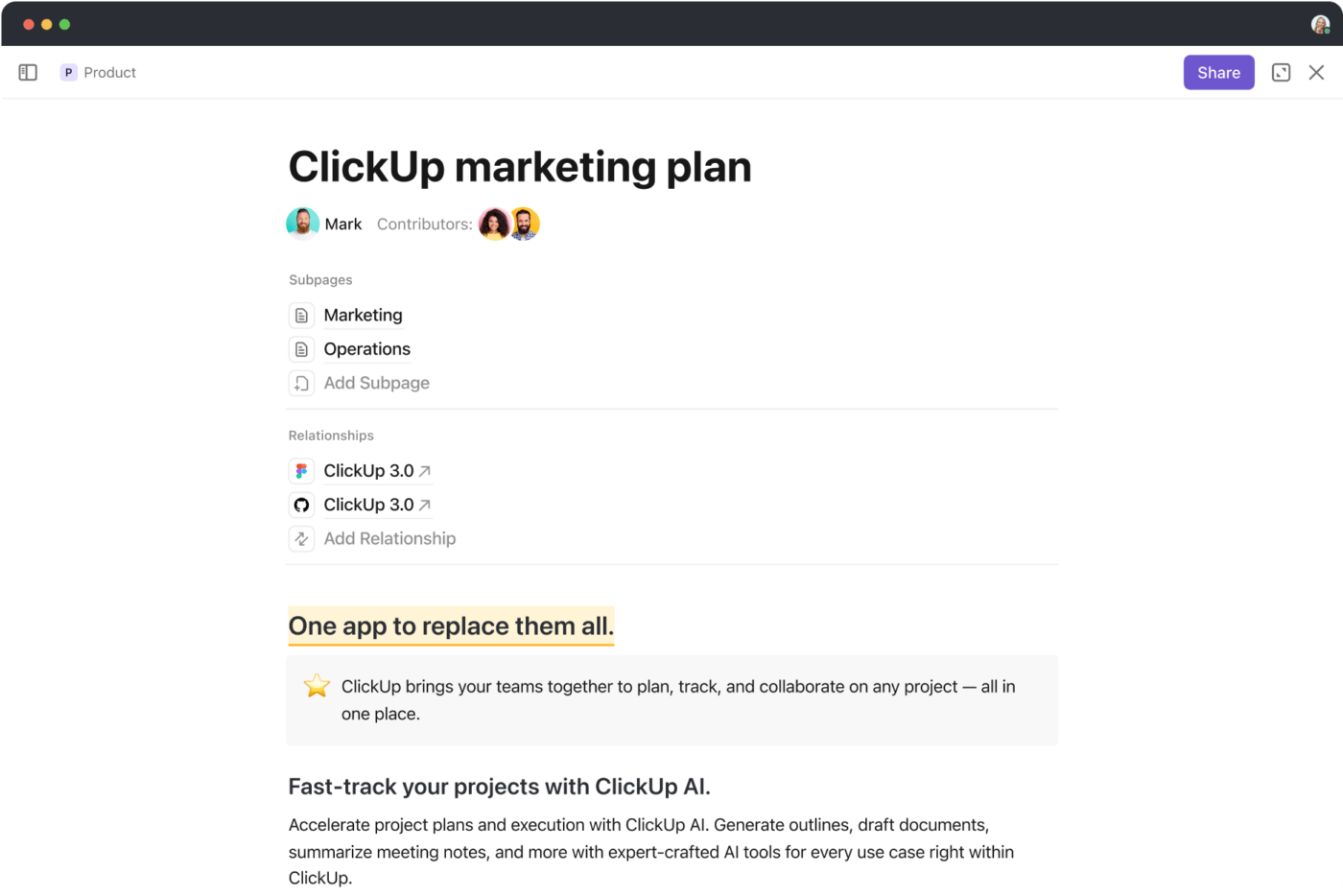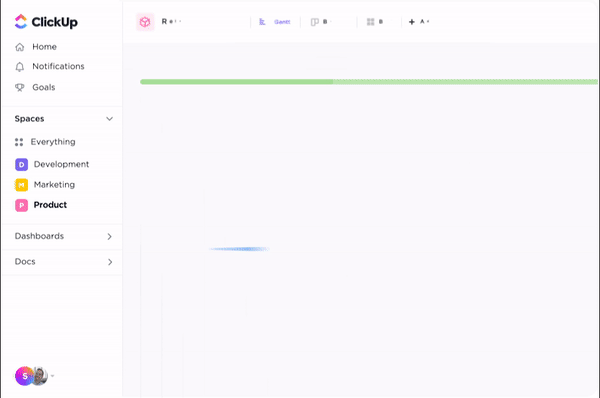How to Conduct an Impact Analysis

Sorry, there were no results found for “”
Sorry, there were no results found for “”
Sorry, there were no results found for “”
Midway through a project, you discover that external factors—regulatory changes, stakeholder feedback, or shifting market conditions—demand adjustments to your original objectives.
Adjusting on the fly might seem tempting. However, changes in project objectives have turned out to be one of the more prominent causes of project failure in recent years.
This is where business impact analysis comes in.
What does it do? It helps you assess your situation, understand potential consequences and negative impacts, plan better, and navigate through seen and unforeseen challenges.
In this guide, we’ll explore how to conduct a thorough impact analysis, its significance in strategic management, and the tools available to optimize the process.
Impact analysis is a systematic process for evaluating the potential consequences of changes or decisions within a project or organization.
It involves identifying and assessing the direct and indirect effects of changes on various aspects, such as project objectives, stakeholders, resources, timelines, and overall outcomes.
An impact analysis helps foresee project hurdles, supports business continuity, and is a stepping stone for informed decision-making.
While all complex projects are planned and have a roadmap, there are chances of changes in project objectives as it progresses. If you have done an impact analysis before starting the project, the team will be better prepared for it when it encounters changes. These changes could happen for multiple reasons, including:
An impact analysis is a crucial part of the change control process in any organization. Conducting an impact analysis is vital for the smooth execution of any organizational change. Here’s why it matters:
Foresee potential risks and challenges so that you create strategies to address them before they disrupt your project.
📌Example
When a company introduces a new operation management tool, an impact analysis might reveal potential adoption challenges and overlap with the existing overflow. By identifying this, management issues warnings and ensures low to zero disruptions in the workflow.
Understand the required resources—time, money, and workforce—and allocate them more effectively to implement a well-supported project.
📌Example
Take marketing campaigns during the holiday season. Additional resources may be required to meet the demand without overburdening the routine team and workflow. With well-executed impact analysis, your marketing team is prepared to accommodate these situations.
Assess internally how changes affect your customers so you may adjust strategies to maintain or enhance customer satisfaction during disruptive events.
📌Example
Think of a retail company changing its packaging. An impact analysis helps identify potential issues, like wear and tear during shipping, to mitigate customer backlash for receiving torn packages. You may even run the new packaging for a focus group to comprehend its negative consequences and improve customer satisfaction.
Strategic management goes beyond addressing crises as they arise; it involves proactive planning for potential changes in the industry, gaining a comprehensive view of the business, and effectively managing resources.
Impact analysis plays a crucial role in this process, helping businesses anticipate and navigate changes for long-term success.
📌Example
One of the most abrupt challenges businesses worldwide have faced is COVID-19. When the pandemic hit, companies that could not go remote were impacted poorly. However, some businesses anticipated some of the negative impacts earlier than others and met the challenge head-on by:
Because of impact analysis, these businesses could form a contingency plan and take control of the situation while it was actively playing out.
Here are some other vital areas where impact analysis plays a role in strategic management:
An impact analysis takes various forms, depending on the business needs and goals. That’s why understanding the key types of impact analysis helps you stay ahead of any disruptive event:
Choose the correct analysis or impact assessment method based on your desired solution.

Prosci offers a detailed framework that lists ten critical aspects of organizational change: processes, systems, tools, job roles, critical behaviors, mindsets, attitudes, beliefs, reporting structure, performance reviews, compensation, and location.
By assessing these areas, you will better understand how changes impact individuals and groups within the organization. This will promote a more empathetic and evidence-based organizational approach to managing change.
🔍Use case: An ideal use case is when a company undergoes significant cultural shifts, such as moving from a traditional office business environment to a remote or hybrid model.

This eight-step process is designed to help organizations manage change effectively. It includes creating urgency, forming a powerful coalition, and generating short-term wins. This model guides an organization through the assessment and implementation of changes to ensure they align with long-term goals.
🔍Use case: Kotter’s model is particularly useful during organizational mergers or acquisitions. In such scenarios, creating a sense of urgency and building a coalition is crucial to ensuring all employees are on board and committed to the change.

This popular method assesses seven key areas: strategy, structure, systems, shared values, skills, style, and staff.
How does it work?
📌Example: When introducing a new leadership style, a company may analyze its impact on the workforce (staff), communication channels (systems), and organizational values (shared values). This ensures that the proposed change enhances performance without disrupting the company’s core components.
🔍Use case: This method is highly effective when a company plans to implement a new strategic vision that requires alignment across all organizational levels.
Impact analysis begins with data—that’s the bottom line! 🤷🏻
Data science transforms impact analysis into a proactive, data-driven process by providing actionable insights. It helps businesses utilize large amounts of data to trace patterns, make projections, and anticipate changes before they occur.
This data-driven method helps make informed decisions in many ways:
Use advanced analytics tools to predict risks better, analyze the proposed change’s potential impact, and implement strategies that improve project outcomes and overall organizational success.
Grasp customer preferences, market trends, competitor behavior, and strategies to map out a new product’s potential acceptability and reception before launch.
Analytics also pinpoint gaps in the market, allowing you to develop new products to fill those gaps. As a result, such targeted product development minimizes missteps.
Impact analysis is required for policymakers to project the outcomes of regulatory changes within organizations. By simulating scenarios based on data and adjusting them to meet operational requirements, policymakers make better decisions that eventually benefit the company and help meet organizational goals.
You have to follow a structured process to conduct impact analysis. Here’s a step-by-step guide on how to conduct impact analysis:
The first step in conducting an impact analysis is to determine which areas of the business will be affected and the extent of changes. This will help you gather the correct information to proceed.
Conduct a project analysis to determine how each will be impacted and examine the workflows and resources that the changes will impact.
Once you know which parts of your business will be impacted, collect detailed data on all relevant processes and resources that the changes will impact. This data will help you understand where they stand and analyze how to proceed.
With clarity as to the changes you want to make, brainstorm the possible outcomes. Assess if the positive outcomes are worth some of the negative impacts. Based on this project evaluation, curate a list of changes you want to make.
No change is perfect. So, of course, there will be negative impacts. Develop recovery strategies to help recover from the challenges. Assign various project metrics to measure if your strategies are working or not.
Evaluate the outcomes and comprehensively analyze the potential impacts to navigate the situation. Include a detailed report highlighting both the positive and negative consequences and actionable recommendations to address risks and leverage opportunities.
Put everything in action and watch it unfold! Your changes will roll out well with well-managed impact analysis and recovery strategies. Make sure you monitor the progress closely and be ready to adjust as new challenges or opportunities arise. This will ensure a continuous alignment with your objectives.
💡 Pro Tip: Use ready-made impact report templates to simplify your process and save time. This will ensure you don’t miss anything and keep you from reinventing the wheel whenever you conduct an impact analysis.
Using specialized tools for impact analysis optimizes the process by providing data visualization, scenario modeling, and risk assessment capabilities. These tools allow businesses to evaluate potential outcomes, identify risks, and make informed decisions.
ClickUp, an all-in-one project management tool, excellently supports impact analysis through its comprehensive features. Its customizable risk assessment and other templates allow users to create consistent and repeatable frameworks for analyzing the impact of changes across projects.
The tool also has interactive dashboards providing real-time insights into performance indicators, helping teams visualize potential risks and the impact of decisions.
Additionally, ClickUp’s planning tools, such as Gantt charts and milestones, enable detailed project tracking and resource management, making implementing strategies easier and ensuring projects remain on course.
Let’s take a look at the specific ClickUp features helpful for impact analysis:
ClickUp’s Business Impact Analysis Template is designed to help organizations assess and resolve challenges before they become issues. This user-friendly template links critical system components to key business function elements so that you can easily view how disruptions may impact operations.
Here’s why you’ll love ClickUp’s Business Impact Analysis Template:

ClickUp Dashboards enable you to analyze impact by measuring key performance indicators (KPIs) easily.
This tool lets you visually track project timelines and progress, risk levels, team workloads, and more to ensure your impact analysis works. View all critical data with customizable widgets so that nothing slips out of sight, and manage personal productivity, software sprints, and marketing campaigns!
Additionally, generate detailed reports on project performance using reporting tools to keep everyone on the same page. This feature allows you to monitor KPIs and quickly adjust strategies as needed to maintain project alignment.
We are amazed by ClickUp’s customization and integration capabilities. Most importantly, ClickUp’s Dashboards have transformed our reporting process. We can now easily monitor workload, present data, and get a high-level overview of all our projects in one single view.
The whole point of impact analysis is to maintain business continuity. ClickUp’s features help transform your impact analysis process into a seamless, proactive effort.

Create a comprehensive impact analysis plan using ClickUp Docs. This lets you collaborate with all stakeholders in one place so that your analysis reports stay up-to-date with the latest data.

Set triggers using ClickUp Automations for specific actions, such as activating recovery plans when certain risks or disruptions are flagged during impact analysis. This way, recovery responses are immediate without waiting for manual intervention.

Finally, ClickUp Milestones are crucial for tracking the success of your continuity efforts. By marking key events—such as the completion of impact assessments or the successful activation of recovery strategies—you keep the entire process on track and aligned with your objectives.
Your risk factor increases when you fail to conduct a proper impact analysis. You have to navigate hurdles in real time, making it harder to focus on progress.
You don’t want to be busy putting out fires all day. So, be prepared with the right tools. This way, you hand off your routine tasks to these tools, plan for other tasks, and move forward.
ClickUp’s powerful templates, real-time dashboards, and comprehensive project management features optimize impact analysis. They enable teams to make data-driven decisions and control changing conditions. With ClickUp, you simplify complex processes and improve your organization’s resilience.
Ready to strengthen your impact analysis? Sign up with ClickUp today to get started!
© 2026 ClickUp